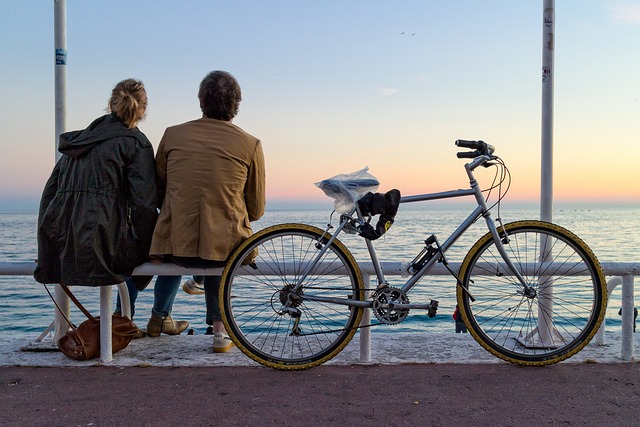Public Transportation in France: A Complete Guide

France is renowned for its efficient, modern, and diverse public transportation system, making it one of the most accessible countries in Europe. Whether you’re navigating the bustling streets of Paris, exploring the picturesque villages of Provence, or traveling between major cities, France’s transport network offers a seamless experience. From high-speed trains to metro systems, buses, trams, and even ferries, this guide will walk you through everything you need to know about getting around France using public transportation.
1. The French Railway System (SNCF)
Overview:
The Société Nationale des Chemins de Fer Français (SNCF) operates France’s extensive railway network, which is among the best in the world. It connects virtually every corner of the country, from urban centers to rural areas.
Types of Trains:
- TGV (Train à Grande Vitesse):
The TGV is France’s iconic high-speed train, capable of reaching speeds up to 320 km/h (200 mph). It links major cities like Paris, Lyon, Marseille, Bordeaux, and Strasbourg, offering a fast and comfortable way to travel long distances. Tickets can be booked online via the SNCF website or app. - TER (Transport Express Régional):
Regional trains that serve smaller towns and less-traveled routes. While slower than the TGV, TER trains are affordable and ideal for exploring the countryside. - Intercités:
These are medium-distance trains connecting secondary cities. Some Intercités trains offer night services, providing an economical alternative to hotels.
Tips for Train Travel:
- Book tickets in advance to secure cheaper fares, especially for TGV journeys.
- Consider purchasing a rail pass if you plan to travel extensively within France. Options include the France Rail Pass and Eurail Global Pass.
- Validate your ticket before boarding regional trains by stamping it at designated machines on the platform.
2. Metro Systems in Major Cities
Paris Métro:
The Paris Métro is one of the most iconic subway systems in the world, with 16 lines covering over 200 kilometers. It operates 24/7 during special events like New Year’s Eve but generally runs from early morning until midnight on weekdays and slightly later on weekends.
- Tickets: Single tickets (called “t+”), day passes, and multi-day passes (Navigo) are available. For tourists, the Paris Visite pass offers unlimited travel within zones 1–5.
- Accessibility: While historic stations may lack elevators, newer ones are wheelchair-friendly.
Other Cities:
Lyon, Marseille, Toulouse, Lille, and other major cities also have metro or light rail systems. Each city has its own ticketing system, so check local transit websites for details.
3. Buses and Coaches
While trains dominate intercity travel, buses are a budget-friendly option for shorter trips or areas not served by rail.
- FlixBus:
This popular international coach service operates across France, connecting cities like Paris, Nice, and Bordeaux. Fares are often lower than train tickets, though travel times are longer. - Local Bus Networks:
Every town and city in France has its own bus network. In rural areas, buses may run infrequently, so it’s important to check schedules in advance. - Night Buses in Paris:
Known as Noctilien, these buses operate after midnight when the métro is closed. They’re a convenient way to get home late at night.
4. Trams (Tramways)
Trams have made a comeback in many French cities, complementing existing metro and bus networks. Modern tram lines are environmentally friendly and provide easy access to suburban areas.
- Popular tram systems include those in Bordeaux, Montpellier, and Strasbourg.
- Tickets are usually integrated into the city’s overall public transport system, meaning you can use the same ticket for metros, buses, and trams.
5. Cycling and Bike-Sharing Programs
France is increasingly embracing sustainable modes of transport, with cycling becoming a popular choice in urban areas.
- Vélib’ in Paris:
Launched in 2007, Vélib’ is one of the largest bike-sharing programs in the world. Stations are scattered throughout the city, allowing users to rent bikes for short periods. - Other Cities:
Similar initiatives exist in Lyon (Vélo’v), Bordeaux (VCub), and Marseille (Le vélo). - Long-Distance Cycling Routes:
France boasts scenic cycling paths such as the Loire Valley Cycle Route and the Canal du Midi, perfect for leisurely rides through stunning landscapes.
6. Ferries and Water Transport
For coastal regions and islands, ferries play a vital role in public transportation.
- Corsica Ferries:
Connecting mainland France with Corsica, these ferries offer both passenger and vehicle transport. - Seine River Buses in Paris:
Batobus is a hop-on-hop-off boat service along the Seine River, stopping at key landmarks like the Eiffel Tower and Notre-Dame Cathedral. - Canal Boats:
Explore France’s inland waterways aboard traditional barges or self-drive canal boats, particularly in regions like Burgundy and Alsace.
7. Ride-Sharing Services
Ride-sharing platforms like BlaBlaCar are widely used in France, especially for intercity travel. Drivers post their routes and passengers book seats, splitting fuel costs. It’s a cost-effective and social way to travel.
8. Air Travel for Long Distances
While not technically public transport, domestic flights operated by airlines like Air France and EasyJet connect distant parts of the country. However, due to France’s excellent rail network, flying is rarely necessary unless time is extremely limited.
9. Accessibility and Special Needs
France’s public transportation system strives to accommodate travelers with disabilities:
- Most modern trains, metros, and buses are equipped with ramps or lifts.
- Reduced-fare tickets are available for seniors, students, and people with disabilities.
- Assistance services are provided at major train stations and airports.
10. Payment Methods and Discounts
- Contactless Payments: Many cities now accept contactless cards or mobile payments for tickets.
- Discounts: Students, youth under 26, and large families can benefit from discounted rates on trains and buses.
- Multi-Modal Tickets: Some regions offer combined tickets for trains, buses, and trams, simplifying travel.



